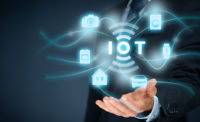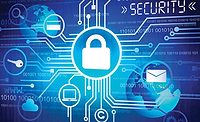How the Internet of Things can Improve Public Safety

With so much on their plate, public safety officials need as much help as they can when it comes to providing services to citizens. Internet of Things (IoT) technologies can aid public officials by giving important insights when they need them most. Especially when it involves the safety of residents, data needs to be reliable and easily accessed – which is where a 0G network comes in. IoT connectivity options like 0G provide a cost-efficient, low-power and user-friendly experience, with simple integration for public safety officials looking to stay up-to-date and secure.
Here are some ways IoT devices running on a 0G network can be used to aid officials, allowing for better public safety.
Preventing Building and Structural Collapse
On average about 128 bridges collapse in the United States every year, causing chaos, disruption and – in the worst cases – fatalities in local areas. The best way to avoid these types of disasters is through preventative maintenance.
Using data generated by IoT devices (sensors) to drive artificial intelligence (AI) and machine learning (ML) algorithms, officials can get predictive insights into city infrastructure and detect damage by measuring shifts and vibrations in structures that can indicate cracks, extensions or excessive strain. This allows officials to identify potentially life-threatening problems proactively and conduct preventative maintenance so small issues don’t develop into bigger problems.
For example, IoT devices (sensors) attached to bridges allow city officials and construction crew officials to monitor all of the bridges across the city 24/7. If a crack seems to be growing or a strain is becoming dangerous, a sensor will send alerts instantly to the appropriate personnel, allowing cities to identify at-risk structures before they cause damage to surrounding structures or harm residents.
Locating People who are Lost or in Danger
Determining the exact location of someone calling 911 can sometimes be a challenge. Due to the close range and constant signal needed by many networks, dispatch can struggle to determine the caller’s exact location in real time.
For example, if a hiker climbs a mountain and gets hurt, he/she usually only has one option to call 911: a cell phone. However, cell signal can become scarce in remote areas. If an emergency occurs, will a call actually go through to 911? And if a call does get made, will the police be able to get the exact location of the injured person?
With IoT-enabled trackers and panic buttons running on a 0G network, these things are a given. By choosing to wear IoT devices connected to a 0G network, hikers can take comfort knowing that first responders can rapidly identify where they are, in real time, ensuring a quicker response. Because the 0G network covers a wide area and is not reliant on WiFi or cellular, police and other emergency officials can be sure that the location is accurate and the signal won’t be lost, making it easier to track the missing party.
Keeping Things Sanitary
Not all public safety applications have to do with missing persons or falling buildings – sometimes keeping cities sanitary can be just as important when it comes to keeping citizens safe.
From monitoring trash collection, vermin infestation and more, IoT devices can give city and public safety officials insight into where in the city there are sanitation issues and how to address them. For example, IoT devices attached to trash bins or dumpsters can communicate how full a dumpster is. If the dumpster is filling up quickly, data collected by IoT would be able to indicate that the dumpster needs to be emptied more frequently. By preventing the buildup of garbage, officials can also prevent the presence of unwanted creatures and the spread of germs.
In the summer, IoT devices can also analyze public pools in real time, indicating if there’s a problem with temperature, pH, active chlorine or salinity levels. This allows officials to address whether or not there are too many chemicals in the pool and stop the spread of disease.
Public safety, from police work to sanitation, is not something that can be taken lightly. By turning to IoT devices, officials can get the insight they need when they need it, resulting in better, safer cities for everyone.
Looking for a reprint of this article?
From high-res PDFs to custom plaques, order your copy today!







